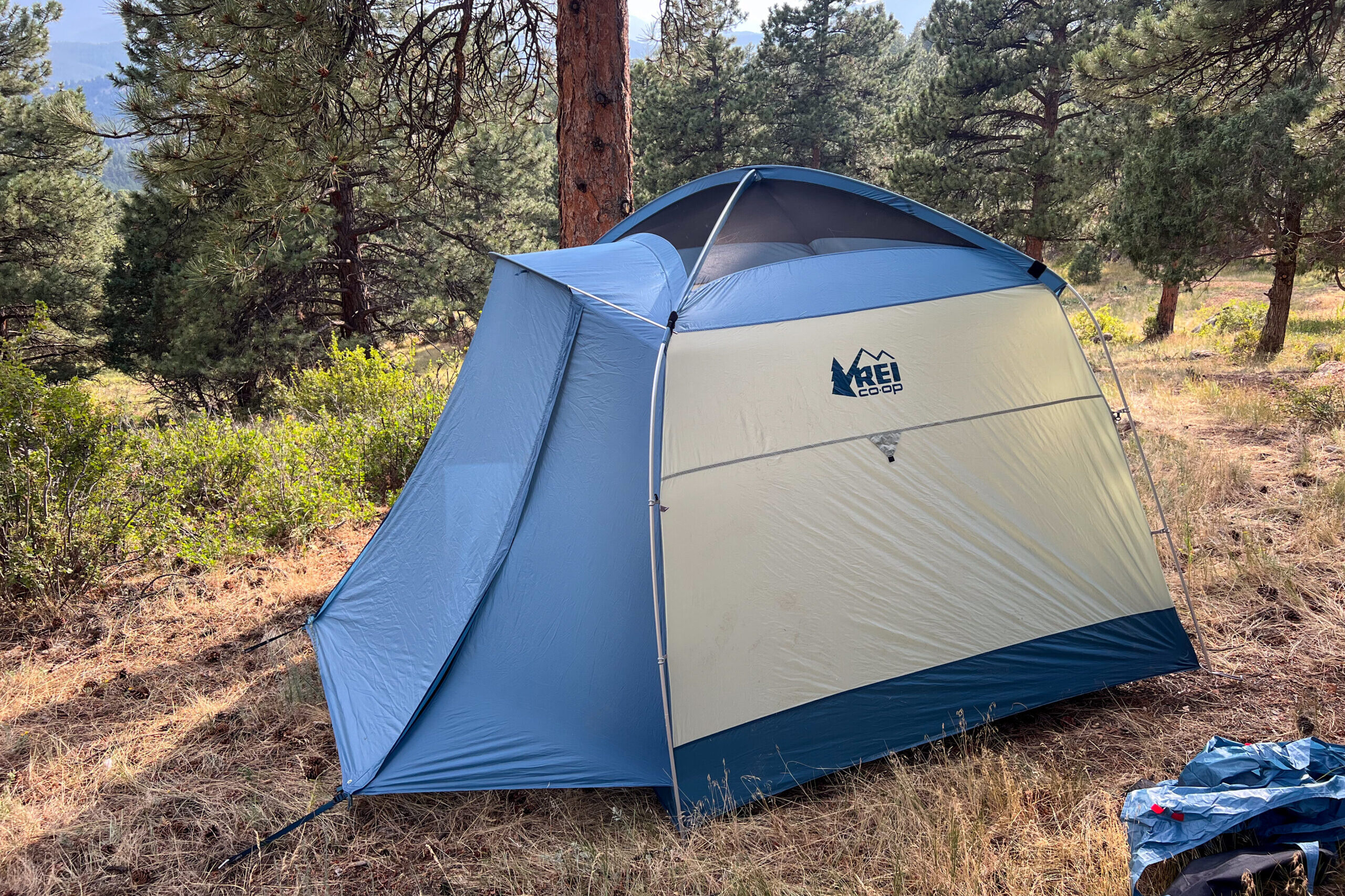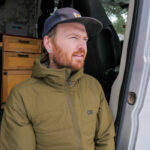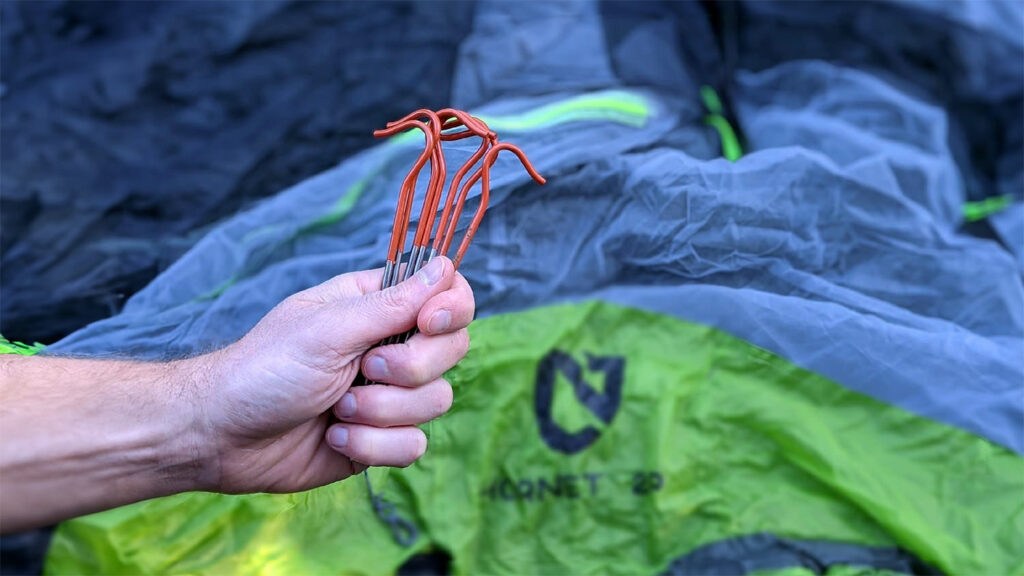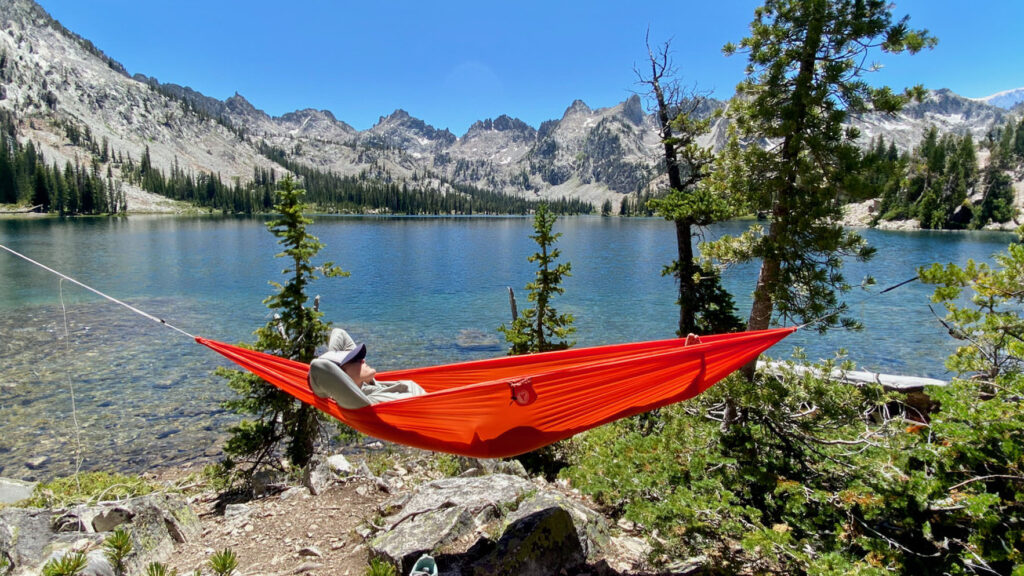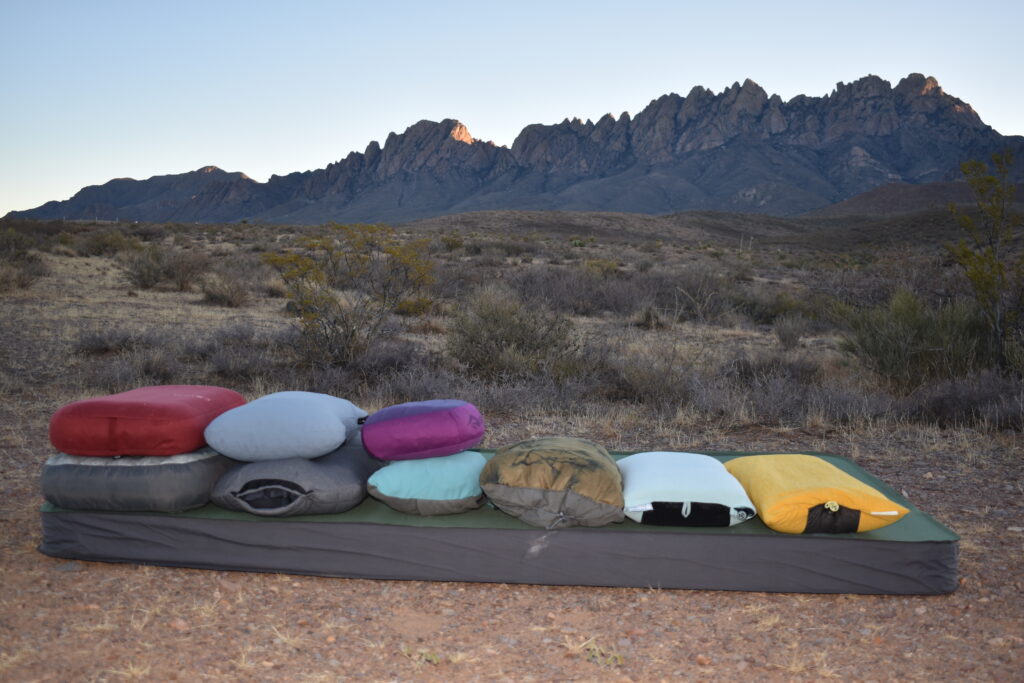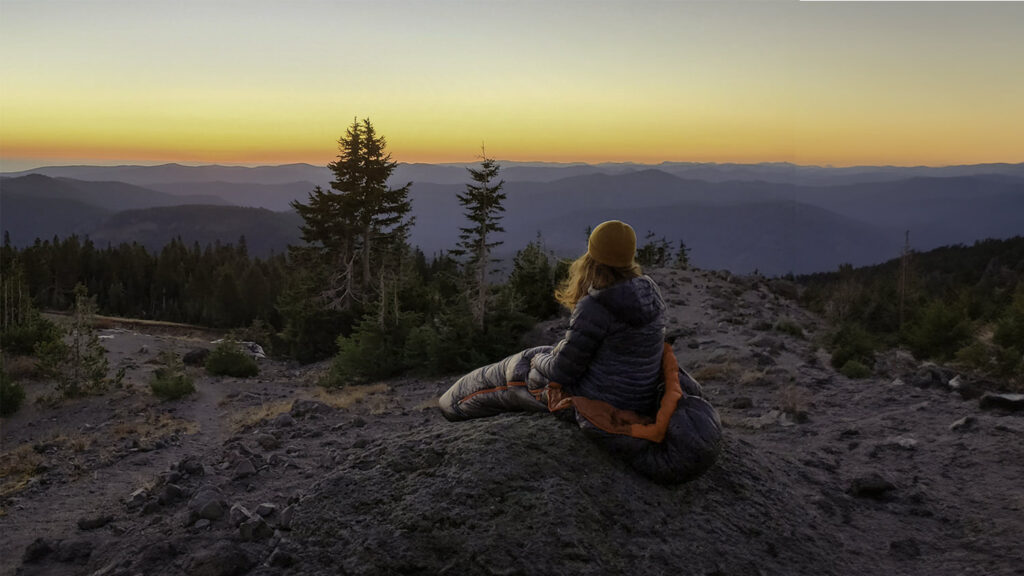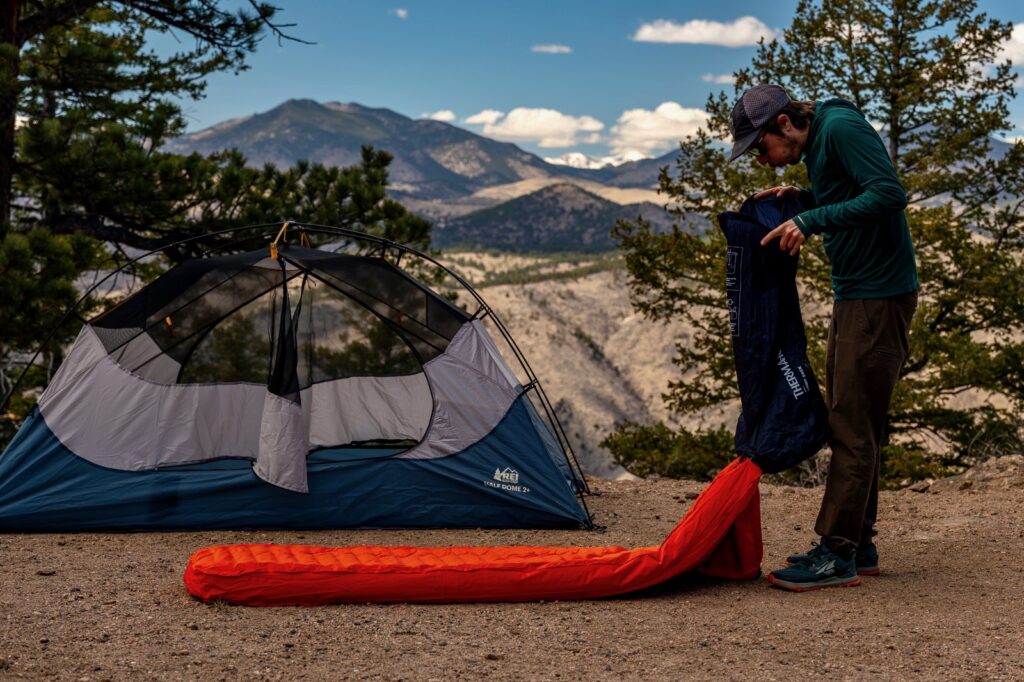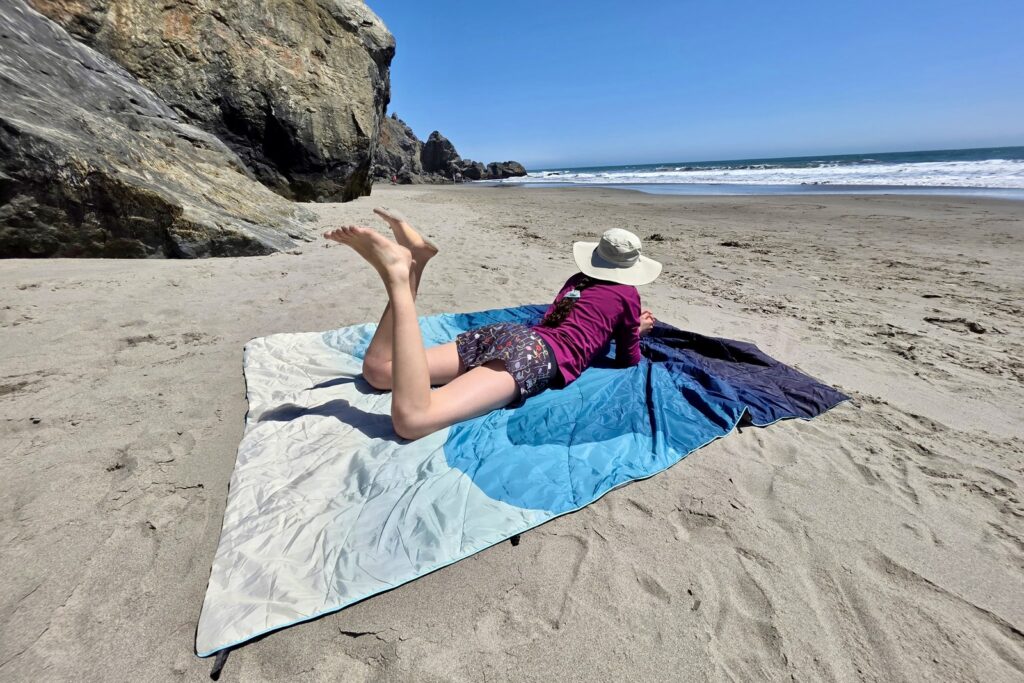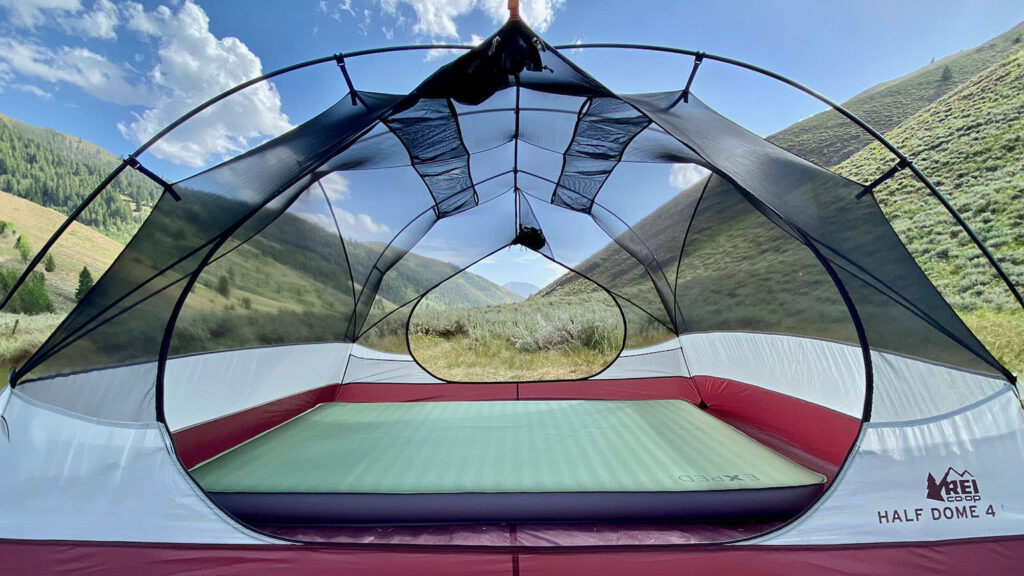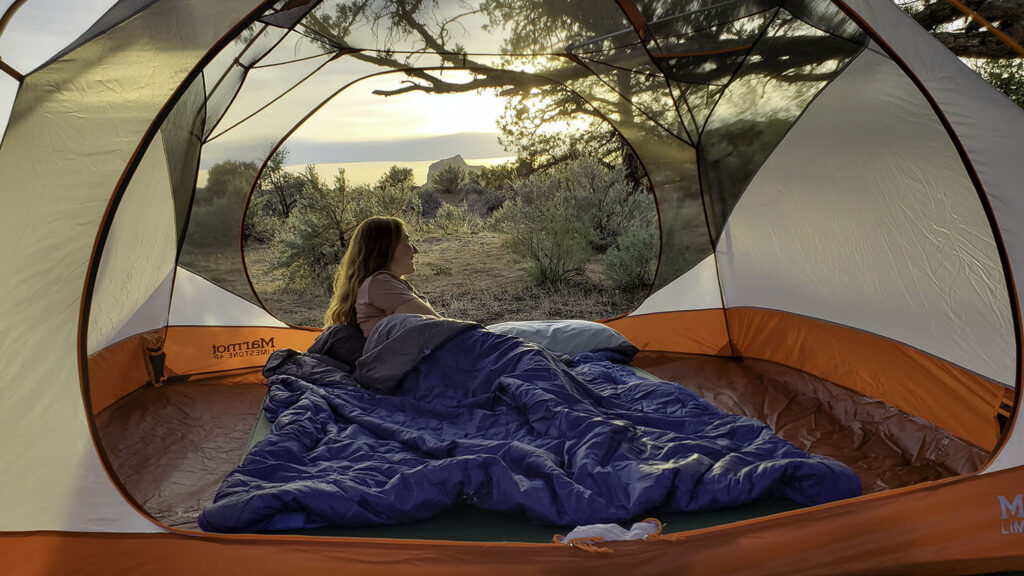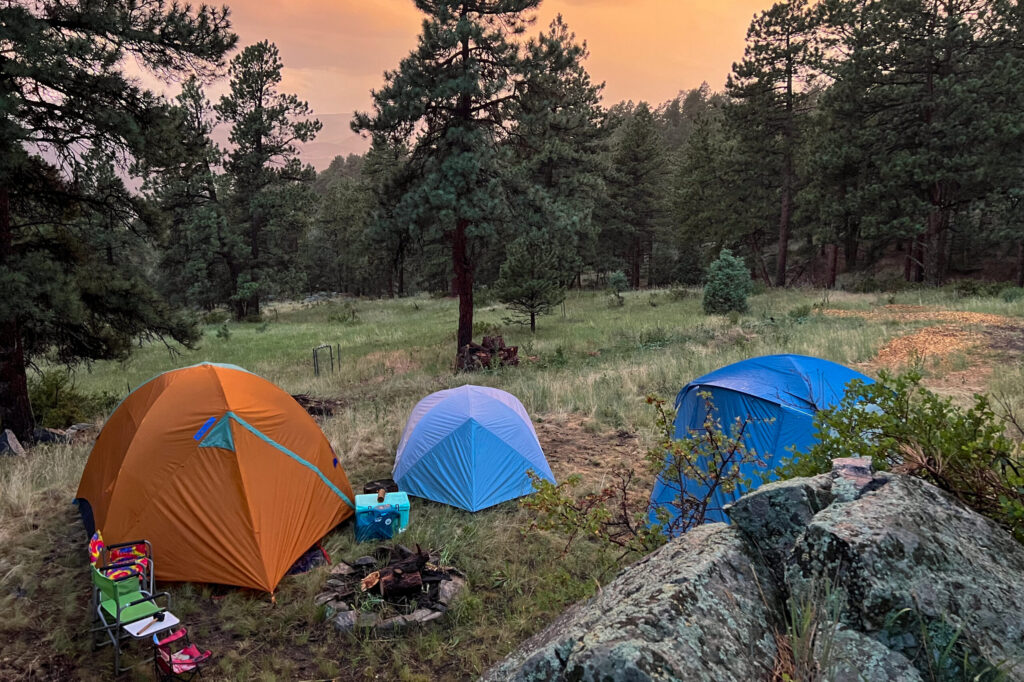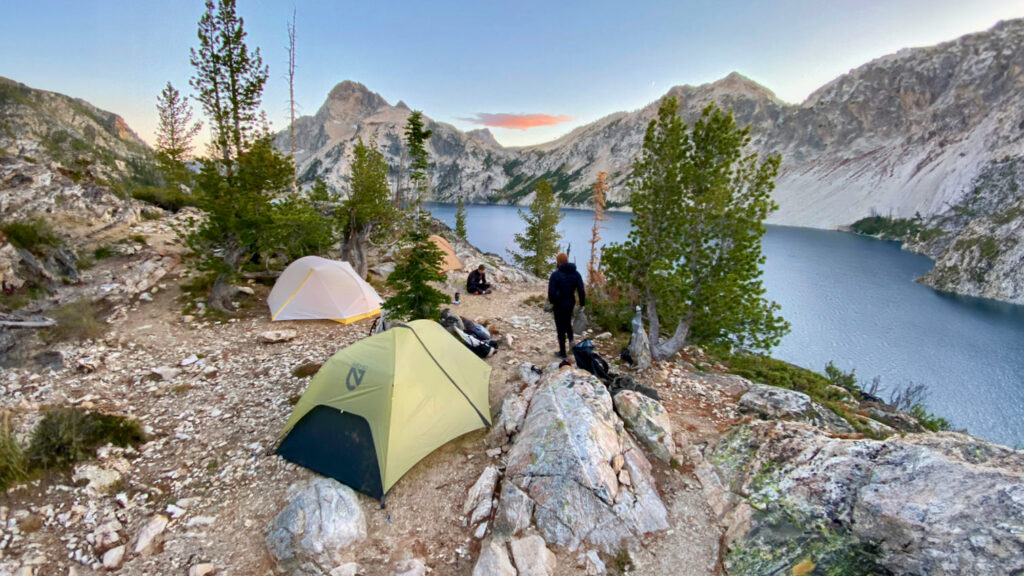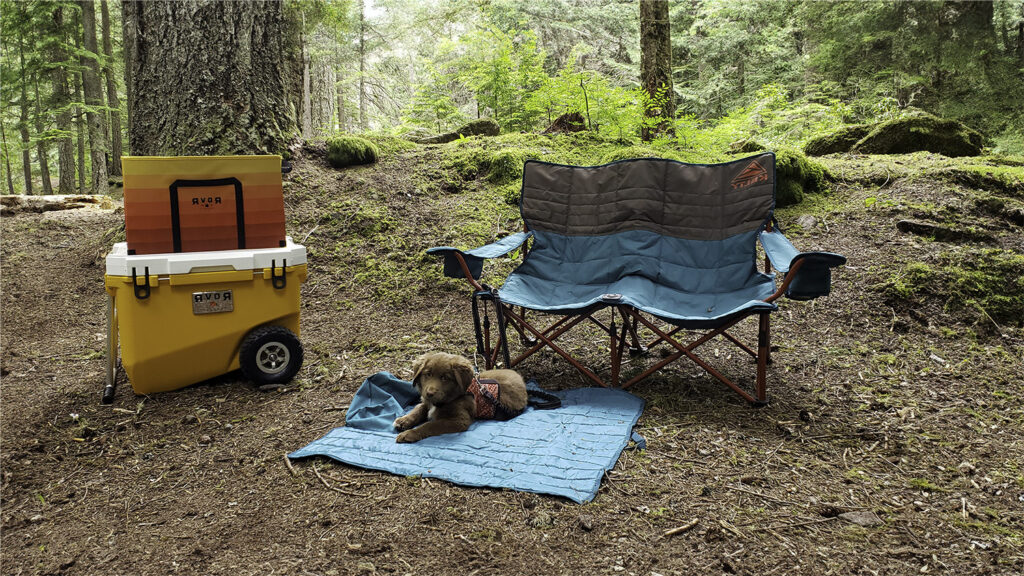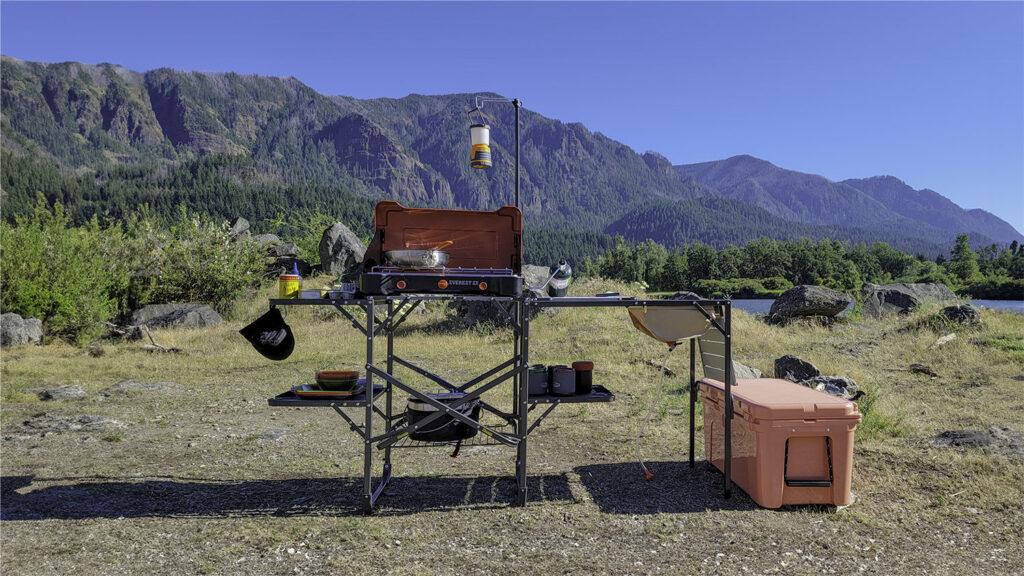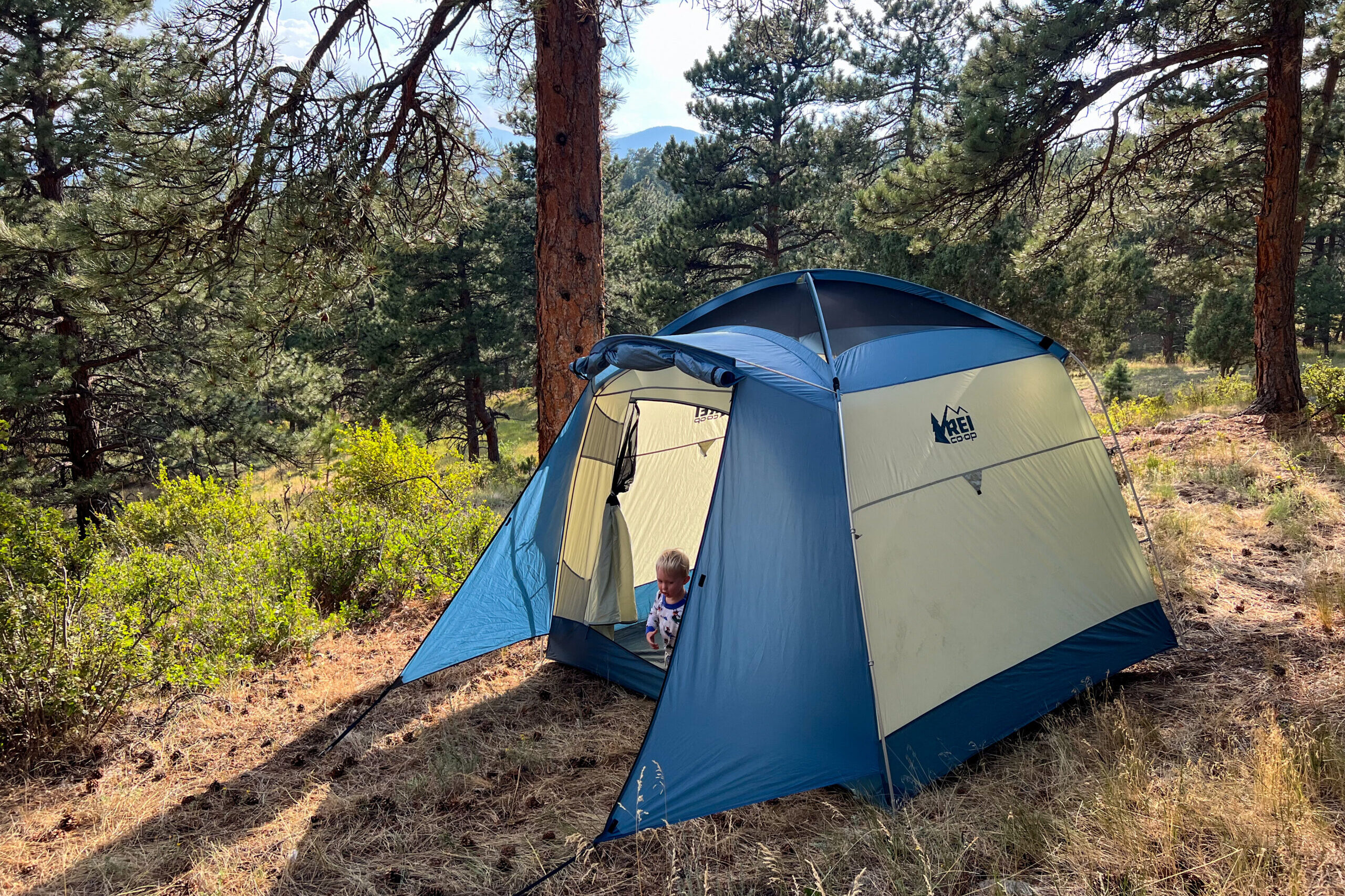
Bottom Line
The REI Skyward is a well-rounded tent with a sweet balance of simplicity, spaciousness, and weather protection. It has near-vertical walls and a luxurious 6 ½-foot. peak height, so you can fully stand up and move freely inside. The Skyward is made with high-quality materials and it’s less expensive than comparable tents. We consider it to be an excellent value and expect it to last for years. We like the Skyward so much that we put it on our list of the best camping tents.
We spent six weeks living in this tent during a cross-country family-of-four road trip to ensure we knew every detail about its performance.
Quick Specs
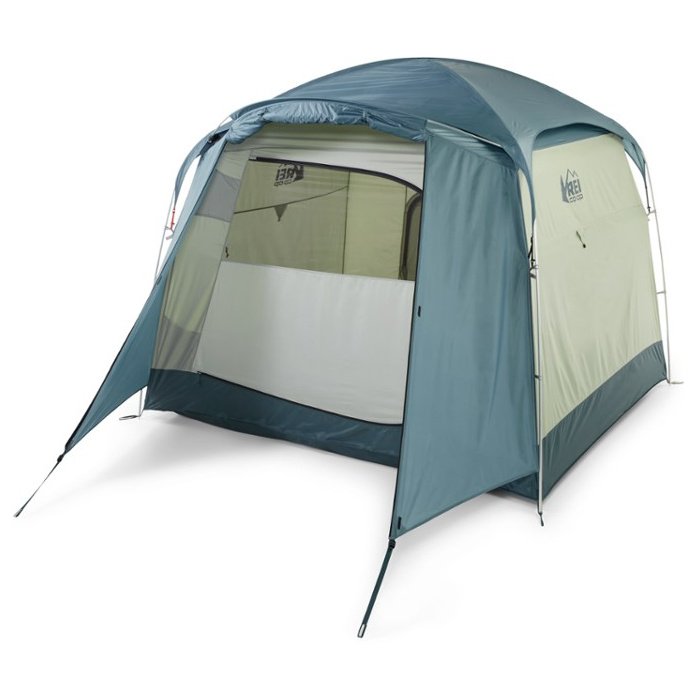
REI Skyward 4
Best Classic Style Camping Tent
CleverHiker Rating: 76.3/100
Price: $374
The size we tested feels: Luxurious for 2, comfortable for 3 & tight for 4
Weight: 13 lb. 11 oz.
Dimensions (LxWxH): 100 x 86 x 78 in.
Pros
- High-quality poles & materials
- Room to stand
- Quick/easy set up
- Large D-shaped door
- Nearly vertical walls
- Detachable vestibule
Cons
- Not as stable in high wind
- Guylines not pre-attached
- No window flap ties
Comfort
Comfort is king on car camping trips and we love being able to change our clothes, stretch out, and navigate through our gear without crouching. The Skyward has a 78-inch peak height, so it’s tall enough to stand up comfortably even if you’re 6’ 6”! Generous floor dimensions allow you to sleep facing either direction, and you’ll have some extra space for gear on all sides. The walls of this tent are nearly vertical too for maximum usable space all the way to the edges.
We were able to change our clothes without crouching even while pinned up against the walls while trying to avoid our toddlers’ extensive collection of dinosaur toys. We found the Skyward 4 to be a good size for 2 or 3 adults or in our case a family of two adults, a toddler, and an infant, but a 6-person version is also available for those who need more space.
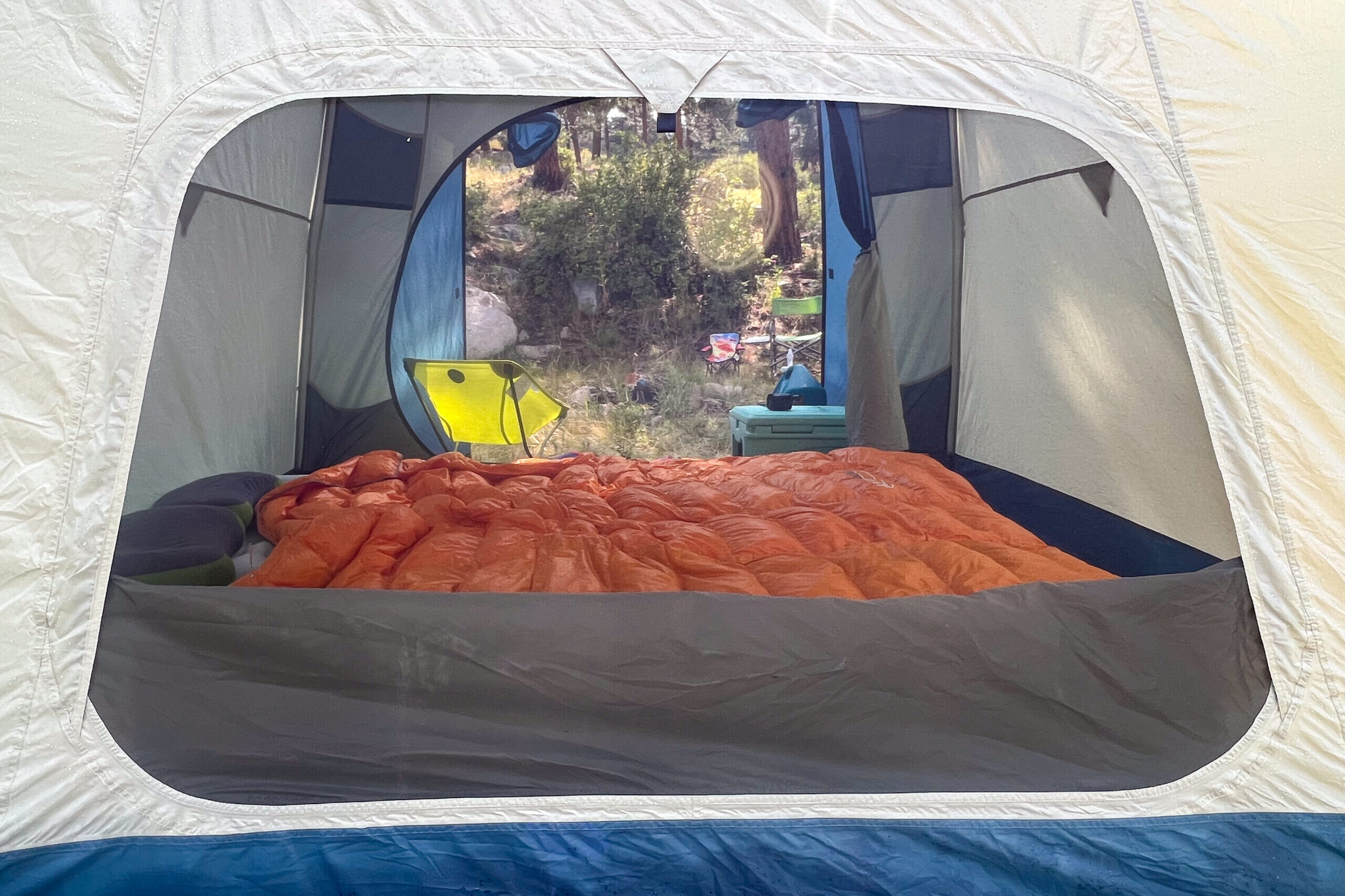
Durability
We wouldn’t say that the Skyward 4 is of poor quality, but we don’t love the feel of the materials. They feel outdated, and while we didn’t experience any issues with the tent fabric, it does seem like it could rip if you’re not careful during setup and teardown. On paper, the Skyward 4’s materials are in line with other tents on our list, but beyond the specs, our hands-on experience gives us some reservations.
Another issue we encountered was with the pre-bent poles. The bent sections can flex further during setup if you’re not cautious. This happened to us while setting up in 10-15 mph winds. It’s best to pitch this tent with a partner whenever possible.
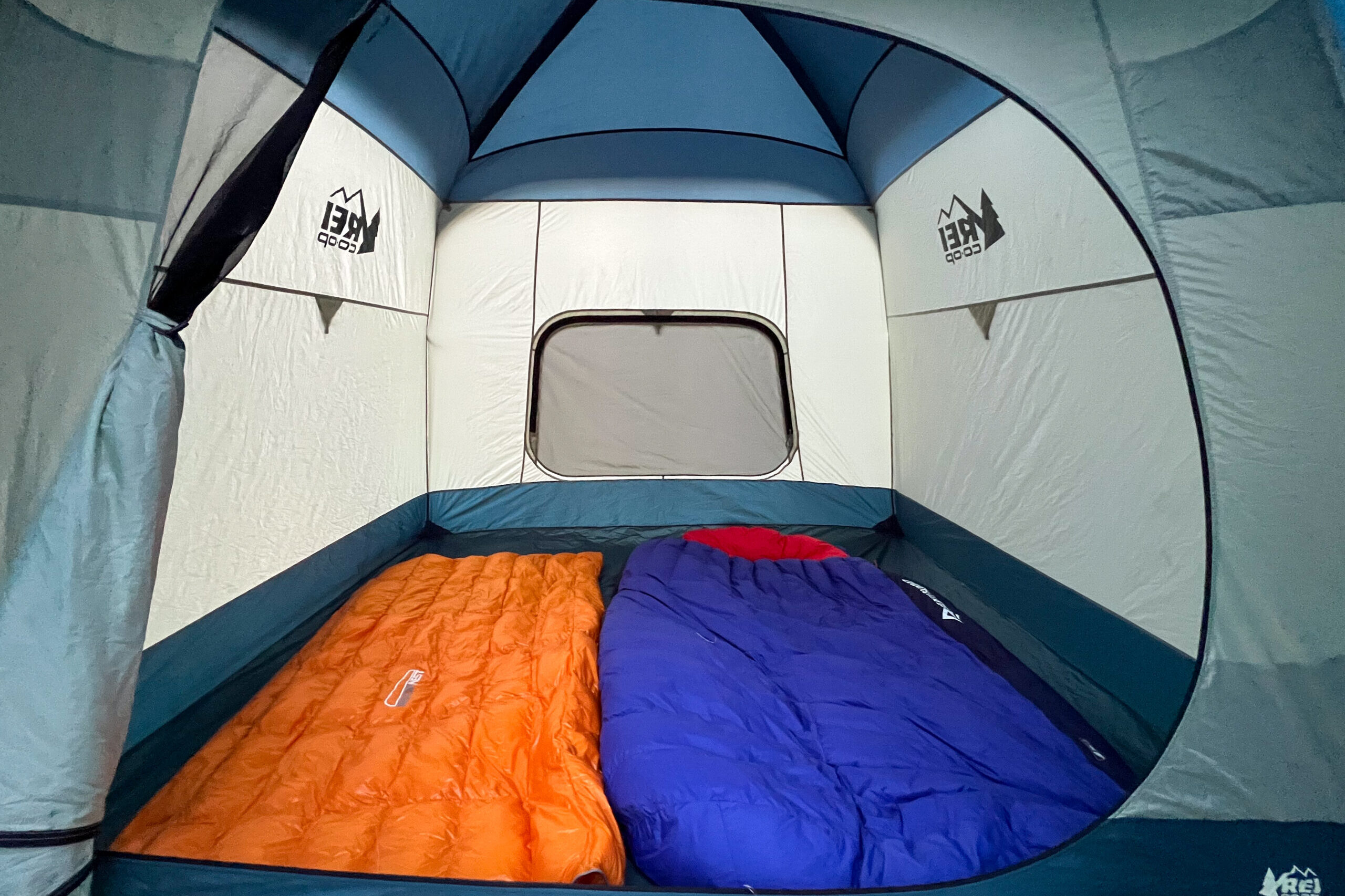
Weather Resistance
Considering how small the rainfly is and how little of the tent it actually covers, we were pleasantly surprised by how well the Skyward 4 held up during torrential downpours. After several consecutive days of heavy rain, we didn’t experience any leakage. However, because the fly doesn’t extend far beyond the mesh of the tent body, there is potential for water to get in during intense sideways rain. Additionally, be sure to use a footprint or ground tarp, as we did encounter some leakage through the tent floor when testing it without a footprint.
The Skyward 4 has near-vertical walls and an impressive peak height, which can be a plus, but the shape also makes the tent extremely vulnerable to high winds. You’ll want to pitch it near a windbreak and ensure it’s fully guyed-out if there’s any chance of strong winds.
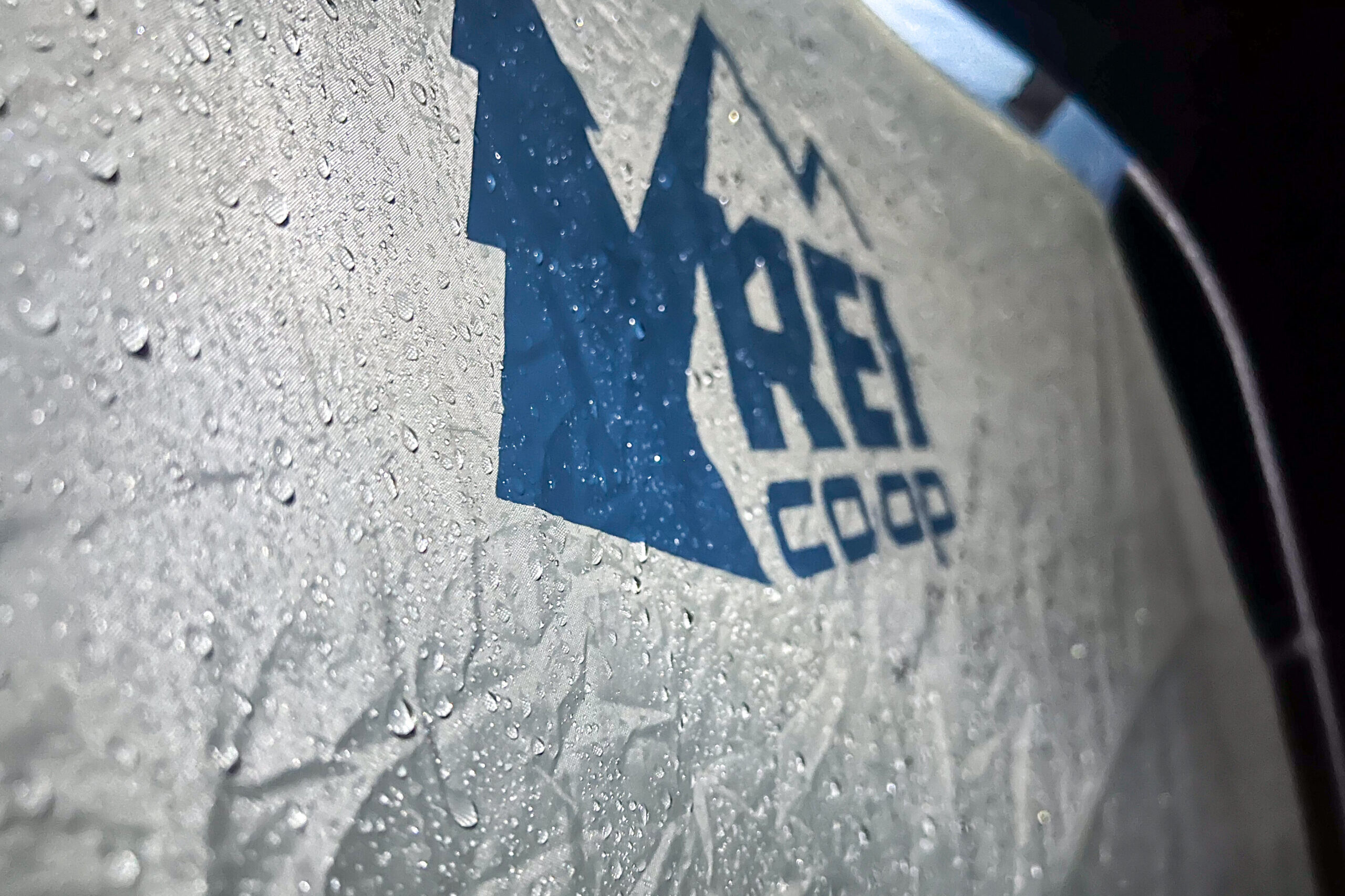
Ease of Setup
In theory, the Skyward 4 should be easy to set up, and with two people, it’s not too bad. The setup involves just two main poles and a brow pole for the vestibule. However, we found it surprisingly frustrating to assemble, especially in even a light breeze. The Skyward 4 has a somewhat outdated design, with the main poles fed through pole sleeves that crisscross over the center of the tent before sliding through a second sleeve.
The pre-bent poles are essential for achieving the Skyward 4’s impressive peak height, but they present challenges during setup. Due to their design, these poles require careful handling and frequent adjustments to properly align them within the pole sleeves. This process can be particularly troublesome in windy conditions, where there is concern that the poles might bend further or become misaligned. It’s not a deal breaker, but if you plan to pitch this tent solo, be prepared for some potential frustration.
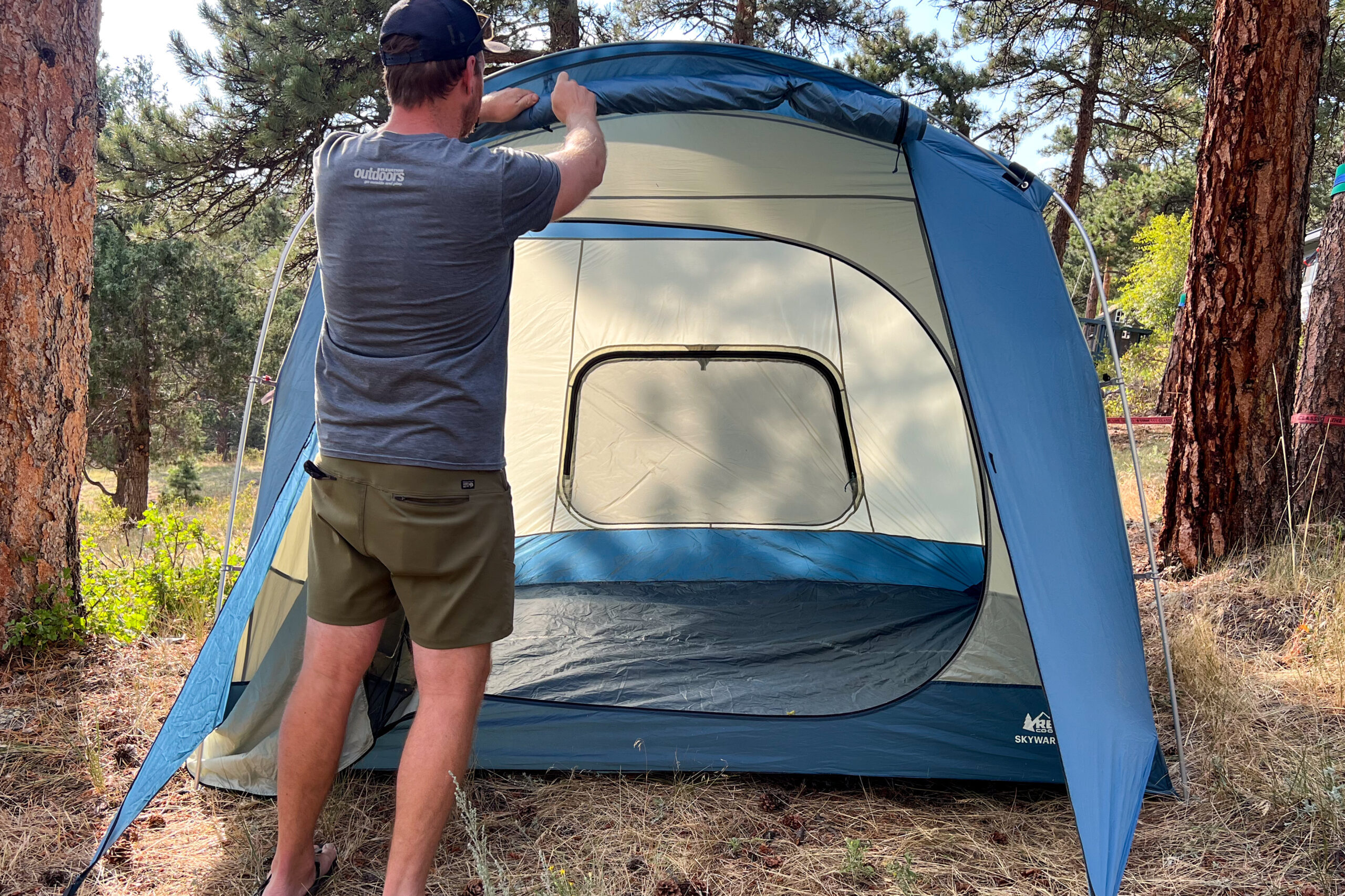
Features
The Skyward has a huge, D-shaped door that makes it easy to get in and out, maneuver large gear (like a camping mattress), and catch views. The low sill is also easy to step over and minimizes the trip hazard when entering and exiting the tent.
On warm summer trips, we like to leave the rainfly off of our tent for maximum breathability and sky views. The downside to leaving your rainfly off is that you typically don’t have as much privacy in a campground setting or an out-of-sight place to store gear. REI tent designers solved these problems by finding a way to make the vestibule separate from the rainfly. The vestibule is attached to the tent body itself and the mesh on the roof is covered by a small, cap-style rainfly that’s quick and easy to put on
A brow pole extending off the front of the tent gives the Skyward extra stability in windy conditions and creates a small awning to protect the doorway from overhead drips.
The Skyward has 4 large mesh storage pockets inside to make it easy to keep track of small items like your headlamp, sunscreen, keys, etc. We love that the pockets are both high and low for reachability. It’s also nice that the pockets are close to the door so you can easily grab stuff from the outside. We wish there were a couple more pockets at the “head” of the tent to keep things handy at night, but it’s no biggie.
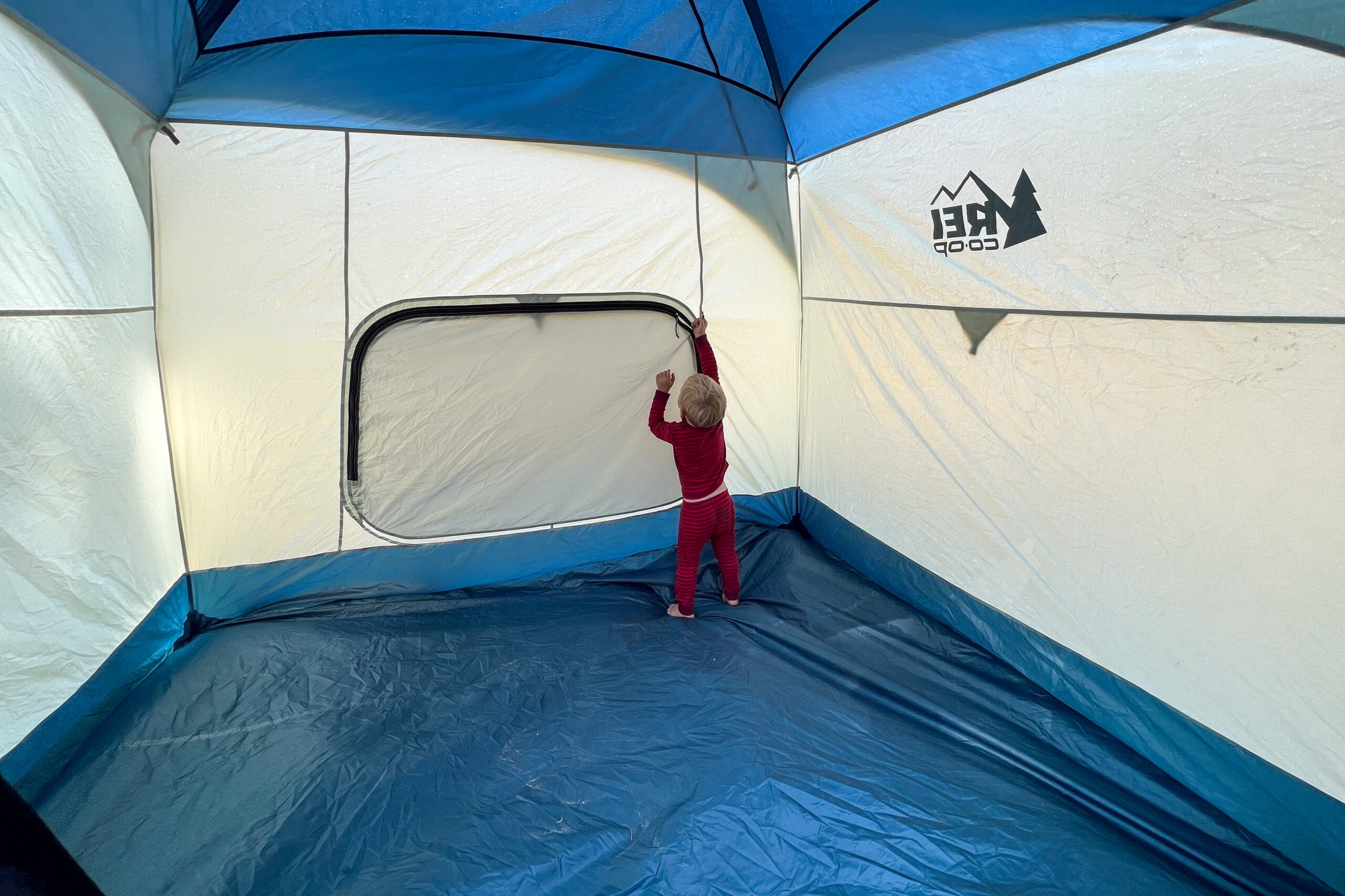
Should You Buy the REI Skyward 4?
Overall, the REI Skyward 4 is a straightforward yet luxurious-feeling tent that is ideal for campers primarily planning to stay in established campgrounds or front country sites. Its generous height, easy setup, and spacious footprint make it particularly family-friendly. The Skyward strikes an excellent balance between quality and price, offering great value and making it a superb choice for those seeking a budget-friendly front country tent.
Additionally, its design avoids unnecessary bulk and complexity, making it easy to handle. With ample room for couples or small groups, the Skyward is an excellent option for fair-weather summer trips, especially where heavy winds are not a concern.
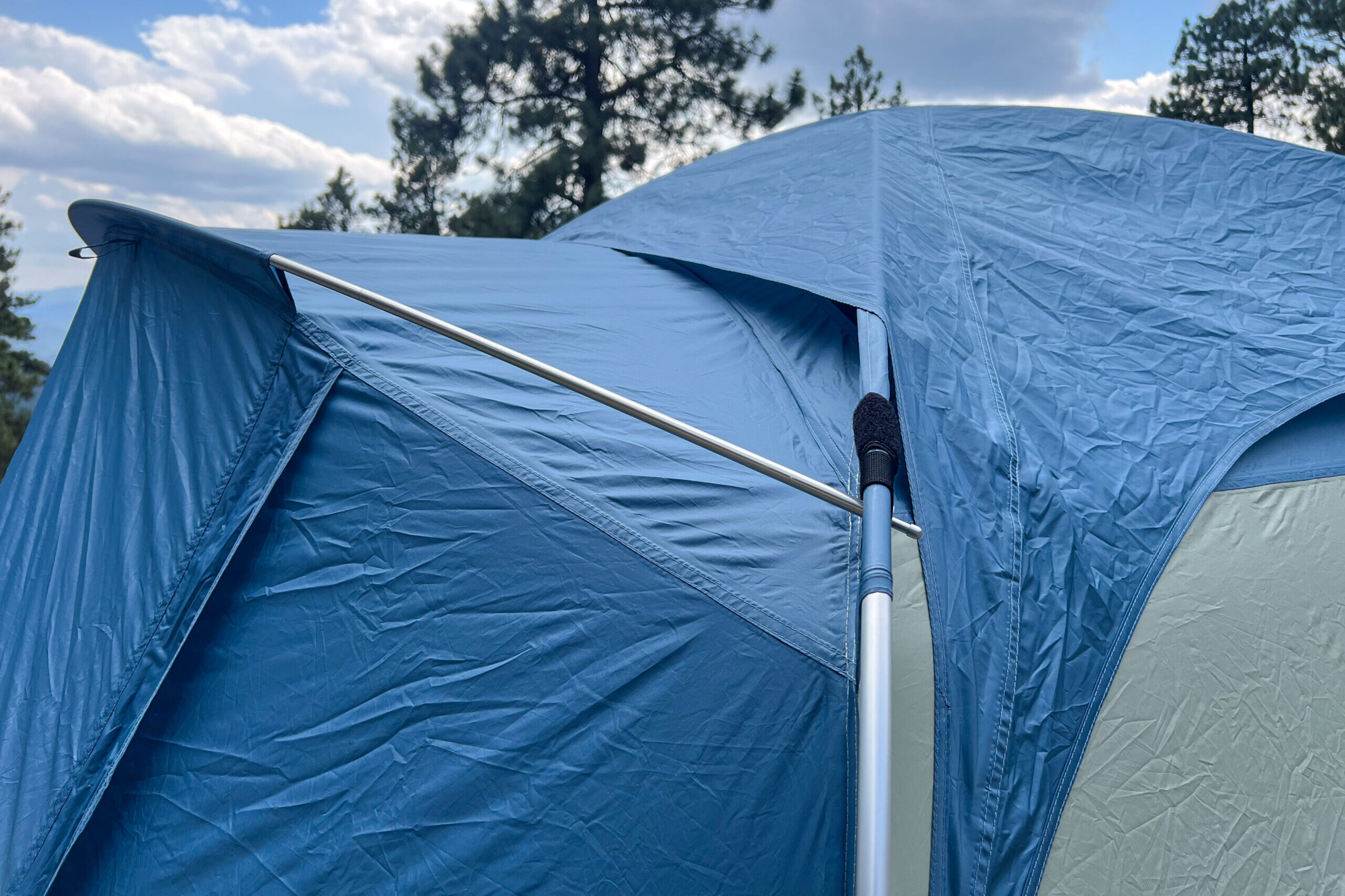
What Other Camping Tents Should You Consider?
Kelty Wireless 6 Review: The Wireless 6 is a great alternative that offers a more budget-friendly price point. It features a spacious footprint, high-quality materials, and a well-designed two-vestibule layout for added convenience.
Nemo Aurora Highrise 4 Review: If you’re looking to invest in a tent with upgraded materials and a more contemporary design, the Highrise 4 is an excellent choice. At just a few dollars more than the Skyward 4, the Aurora Highrise 4 provides enhanced durability and modern features, making it a valuable upgrade for those seeking a superior camping experience.
